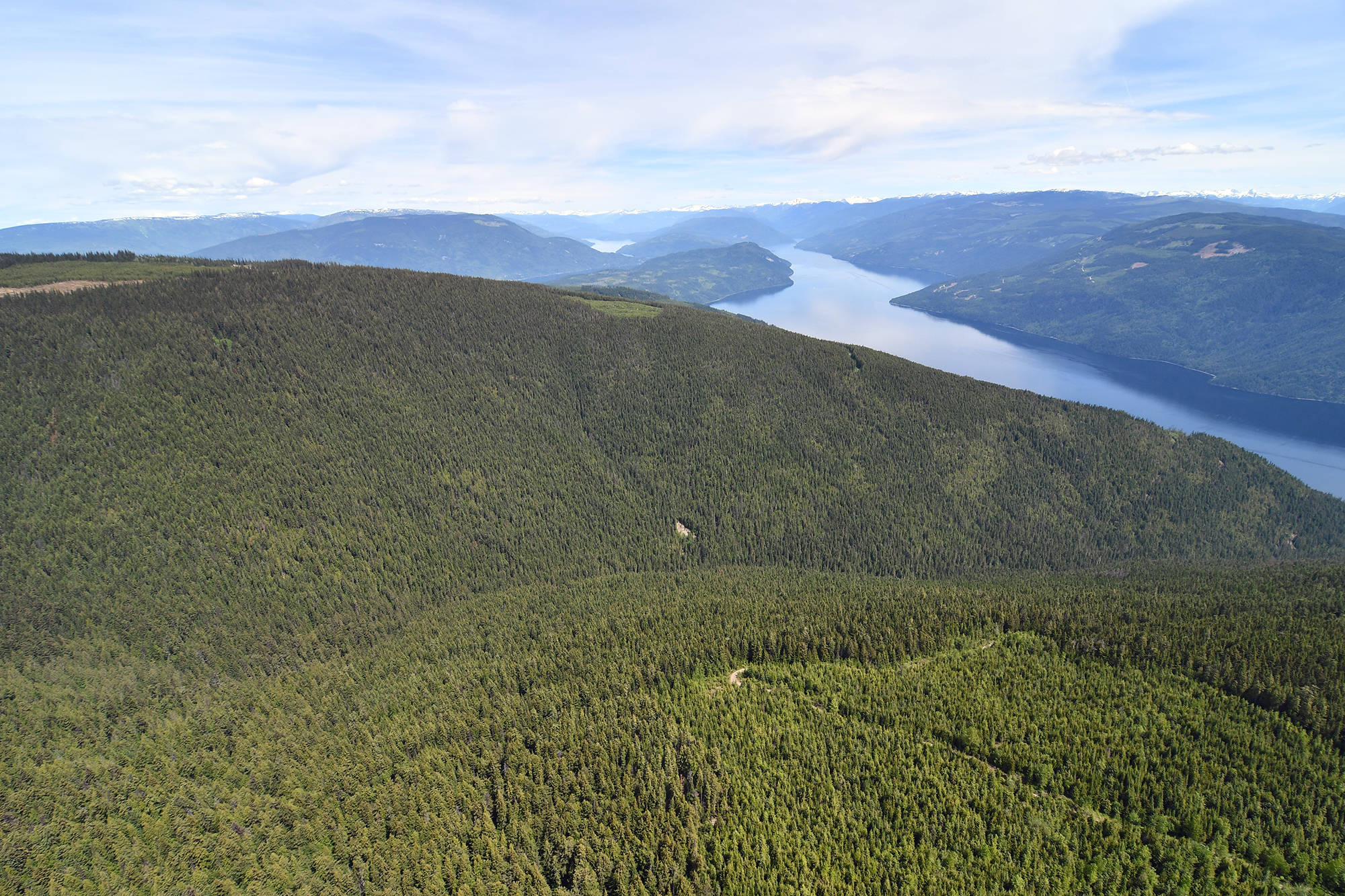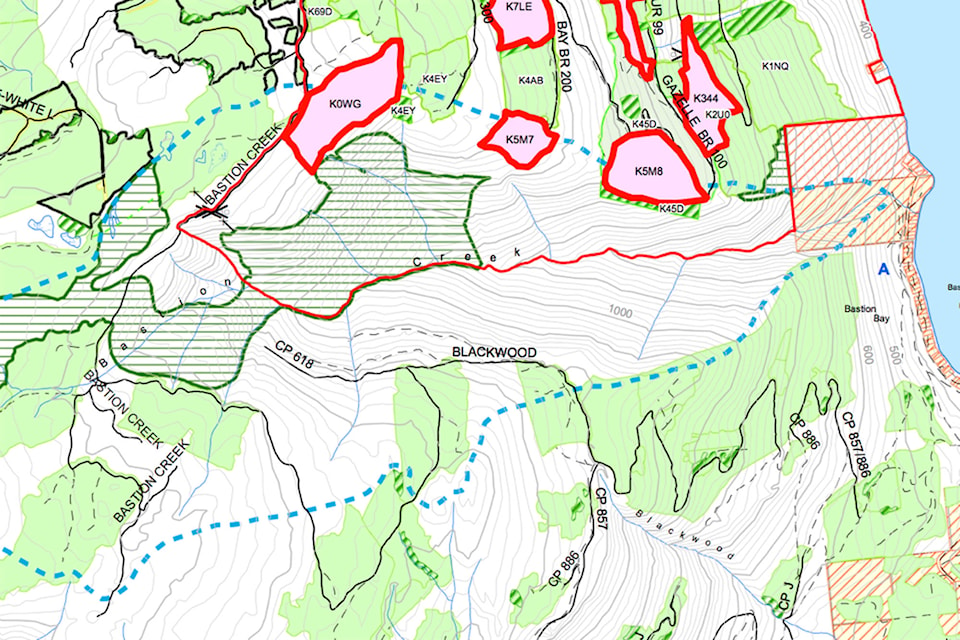Across the province, watersheds are under assault by forestry operations as timber supplies dwindle and logging companies move into hillsides above communities.
Excessive clear-cutting in the upper watersheds above Grand Forks directly contributed to massive flooding in the community last spring. Logging above Peachland resulted in excessive siltation in their drinking water thus forcing the community to build a 55-million dollar water treatment infrastructure. Here in the Shuswap, there have been countless landslides and debris torrents caused in part by logging and road building that have resulted in millions of dollars in damage and loss of life.
Early this January, I was asked to assist the Totem Pole Resort community, located on the Bastion Creek floodplain fan, with their response to logging plans for their community watershed by two licensees, Canoe Forest Products (Canoe) and BC Timber Sales (BCTS). Canoe’s blocks were located on the ridge far above the creek and did not appear to threaten the integrity of the watershed, whereas the BCTS blocks pose great threats to terrain stability, water quality and the safety of the residents.
When BCTS announced its revised schedule for the logging and asked for comments within two months, the issue became urgent. Years ago, I had urged the Totem Pole residents to get community watershed status to protect the quality of their drinking water, which they did. We successfully received this status for our local Corning Creek watershed in the 1990s, when detailed planning that involved local residents was a requirement. Consequently, I participated in the process that involved reviewing reports and analysis, which resulted in an inch-thick plan with detailed mapping.
Read more: CSRD calls for moratorium on logging by Swansea Point
Read more: Proposed logging prompts call for moratorium
Read more: A history that should not be repeated
How times have changed! BCTS informed me that detailed planning is no longer required, but they did have a hydrological assessment that found negligible risks to the timing, quantity and quality of water in Bastion Creek from the proposed forest development. After requesting a copy of the report, I was shocked to learn they have a policy of not sharing information like this with the public, but that I could read it in their Vernon office or at the Canoe office as the company paid half of the costs of the report.
Here is the scenario I could visualize if the logging proceeded as proposed on the steep south face slope. After a winter with heavy snowpack and an early spring with hot weather, a heavy rain quickly melts the snow on the logged block next to a tributary of Bastion Creek causing erosion. The tributary gets blocked with debris, and when it releases it sends a debris torrent down to Bastion Creek, which temporarily dams the flow. When this dam breaks, a wall of water moves down the creek to the lake, wiping out homes and putting lives at risk.
We finally managed to get a copy of the 13-page hydrology report after requesting it through the Freedom of Information office in Victoria. While we thought the report should contain information we could use to get the plans rejected, the report was woefully inadequate and lacked key information. Fortunately, both the foresters’ and engineers’ professional organizations have also been concerned about the quality of hydrological assessments and recently prepared a new set of standards. Hopefully, BCTS will scrap their plans and report, and have a new assessment prepared using the current, 72-page long professional standards.
@SalmonArm
newsroom@saobserver.net
Like us on Facebook and follow us on Twitter

